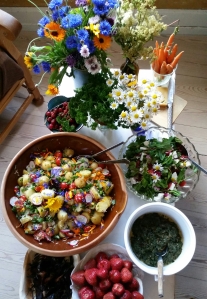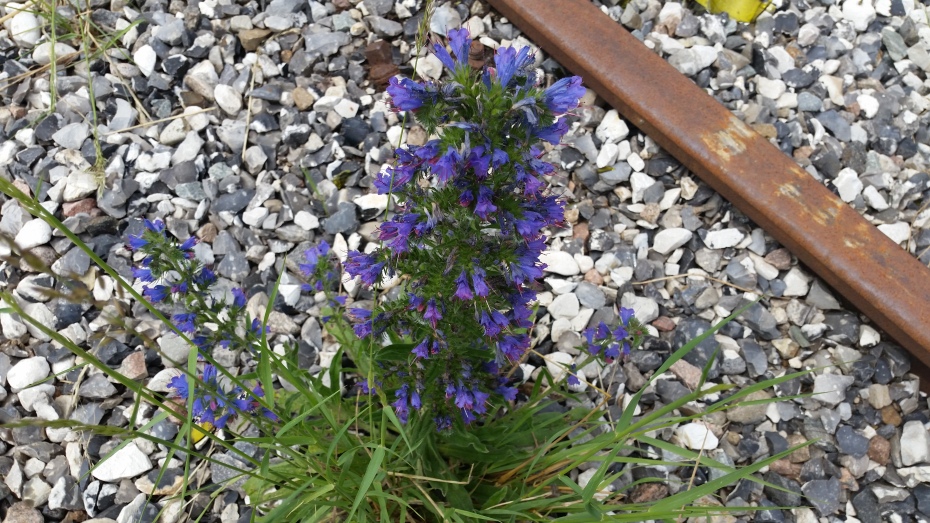A New Era
WITH GRATEFUL SHOUTS OF JOY, it is a tremendous pleasure to announce the long awaited birth of Sensescapes as a sense laboratory, officially organized as an association where YOU can become a member.
This is our fundament:
- Sensescapes is a laboratory for multisensorial exploration.
- The aim of Sensescapes is to inspire people to become more sensuous, sensible and sensing in their everyday life.
- The laboratory seeks to provide, facilitate and develop sustainable activities with aesthetic quality.
Everyone who agrees with the above principles, can become a member of the Sensescapes association.
The official founding happened last week. On a wet summers’ day, six dedicated souls joined around the wooden dining table in my living room on fourth floor in the middle of Aarhus. Our purpose was to bring the work of Sensescapes to its next level.

Regulations for our association where written. Papers where signed and a wonderful board constituted itself. The leaders of the Sensescapes association are now:
Chairman: Inger Kærgaard, teacher, biologist and environmental activist with special love for trees (read an interview with her here)
Vice Chairman: Lauge Rasmussen, MA in Experience Economy and co-founder of Pitcherific.com
Treasurer: Jacob Vibe, forester and owner of Vibes Træpleje
Board member: Ida Krøgholt, lector and Ph.D. at department of Dramaturgy, Aarhus University
Board member: Pernille Kølbæk, Ba in Aesthetics and Culture, MA in Experience Economy, project manager at LEGO

Signing the regulations of the association of Sensescapes.
With this lovely, diverse leadership group, and with myself as daily caretaker and developer of the laboratory, Sensescapes is now open for new experiments, new encounters, new immersions and new horizons.
Thrilling.
Would you like to become a member and supporter of the laboratory? Then read more about membership here.
Exploring taste – eating the local
In the spirit of sustainable, sensory encounters with the everyday, a little experiment was made for the meeting. It began with a restriction: All servings was to be made only from locally grown ingredients. Usually my shopping basket contains lots of things that has been shipped from all over the world. By changing my natural behavior with this one-time restriction, I wanted to explore the personal changes in food perception and eating experience. Since I live in the middle of the city and own no garden, this seemed like a fitting challenge for an exploration of the local.
It was midsummer. I took my bike and a couple of books about edible plants and went along Brabrandstien, a path running alongside a lake just outside the city.
This is what I found and brought home:
- Meadowsweet
- Elderflower
- Nettle
- Wild cherries
- Ground elder
- Clover
- Chamomile
- Rosehip
- Blueweed

What Brabrandstien could not provide, I found and bought at the local farmers market and in local stores.
Coming home, another major change appeared. Usually I do not spend hours in the kitchen. Here there was no choice but to follow the speed of slow preparation. Chopping, baking, cooking, mixing, washing, cutting, spreading, sniffing, arranging, saving, waiting, tasting.
As hours went by, food preparations evidently became a sensory meditation. Not meditation in the sense of relaxing wellness, but in the sense of focused awareness of the present beings, movements, scents, colors and emotions in the here-and-now.

In my living room the board meeting was at its end. In the kitchen, food was ready.

Dinner was served
Værsågod (here you go):
Cherries from Brabrandstien.
Homebrewed mead from our wedding two years ago. Strawberries from Samsø. Apple juice from Fyn, and beer from Den Gamle By.
Beets from a nearby field, slowly baked with onion and chili from a family member’s green house.
Nettles and beet tops stewed in homemade butter from the local farmers market and cream from the south of Jutland.
Salats with potatoes from Samsø and goat cheese from Horsens, topped with rapeseed oil from the north of Jutland, and various flowers from around.
Plus some more.
In my home we have an everyday ritual of holding hands and saying thanks for the food before eating dinner. Not as a religious prayer, but as a mindful verbalization of the long procedure of growing, picking, sending, buying, making and sharing the food.
This night, performing the daily practice of gratitude made deeply sense. For the first timer ever at a dinner table, I had an actual, embodied knowledge of the origin of nearly every single ingredient on the table. The presentation took a while, as I listed all the things and the places they had grown or been made.
After hours of talking, the atmosphere shifted as we started eating. Collectively we fell into tune with each of our sensation of the time demanding preparation and the appearance of the food for our eyes, tongues and hands. It was a pleasure.

A few days later, I read a short book about taste by the Danish food anthropologist Susanne Højlund. She describes taste as a multisensorial phenomenon, not only a sense located in our mouth, but involving all parts of our body. Besides the sensory stimulation of eating, she adds, taste is also a culturally situated experience, colored by our expectations, the history of the food, and the social aspect of sharing it (Højlund, Susanne, 2016: “Smag”, Aarhus University Press). This approach stems perfectly with my experience of our meal. For me, the meal became a full-body sensation of eating a piece of Danish summer.
With great hope for future projects and explorations to come!
Lotus




























